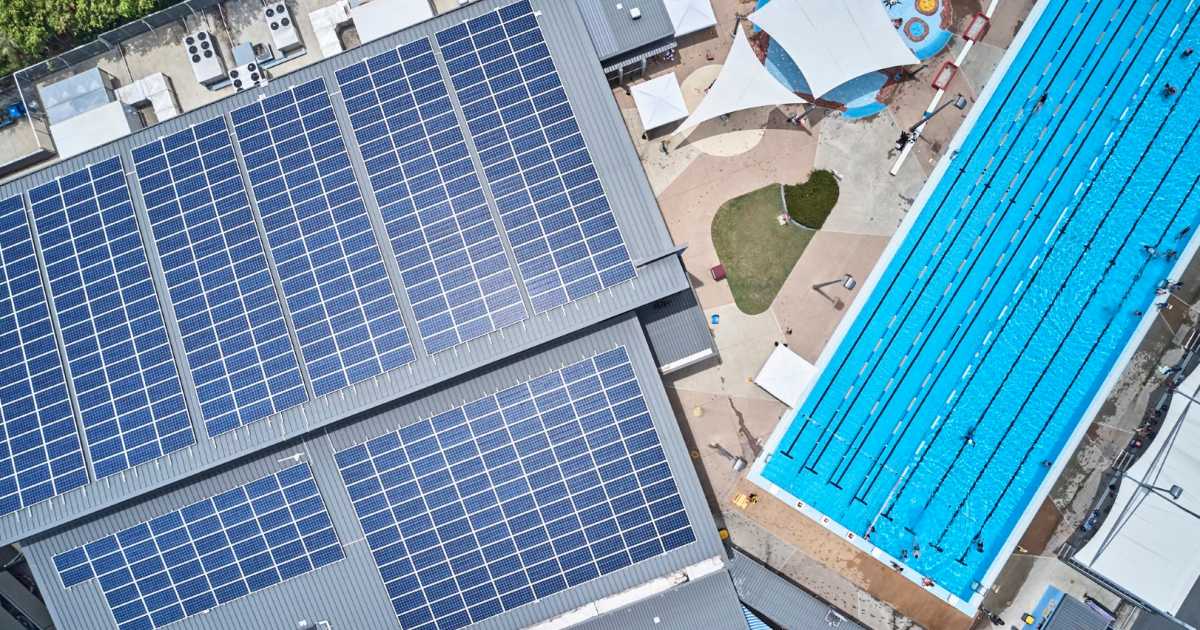More solar power capacity is on the way for New South Wales’ Tweed Shire Council, building on an already impressive installation tally.
Back in 2017, Council adopted its Renewable Energy Action Plan (REAP) with the goal of generating 25% of its own electricity from renewable sources by 2022, and 50% by 2025.
By the end of 2018 Council had more than doubled its solar capacity. The solar rollout continued in 2019, with installations including a 165kW rooftop system at Tweed Regional Aquatic Centre (TRAC) in Murwillumbah (pictured above).
More PV was installed last year and Council also kicked off a 10-year Power Purchase Agreement with Flow Power, providing around half Council’s electricity requirements from wind and solar farms in New South Wales.
Phase 1 of REAP saw solar arrays installed at more than 20 Council facilities, which in addition to providing huge energy bill savings are avoiding 1,185 tonnes of greenhouse gas emissions annually.
Phase 2 Of Solar Rollout
With Phase 1 pretty much done and dusted, it was time to move on to Phase 2; which was unanimously supported at a Council meeting in April. Involving investment of $1 million, this phase is set to almost triple Council’s current solar capacity to more than 2,200 kW.
Among the twelve facilities to have solar power systems installed over the next two years are Tweed Regional Gallery, the water pump station and treatment plant at Bray Park, Hastings Point Wastewater Treatment Plant and Banora Point Community Centre. There are a couple of projects deferred from Phase 1 that will also be completed in Phase 2, including a 604kW ground mounted system at Banora Point Wastewater Treatment Plant.
Towards Net Zero Emissions
At its 19 September 2019 Council meeting, Tweed Shire Council declared a climate emergency. Council’s Interim Climate Change Action Plan released last year includes 57 actions in response to this, with solar power of course being among them.
“Through a combination of energy efficiency works, installation of renewable energy systems, carbon offsets and purchasing renewable energy we are aiming to meet Council’s target of reducing electricity-related carbon emissions by 25 per cent by next year (from 2016/17 baseline), 50 per cent by 2025 and to have achieved net zero emissions by 2030,” said Mayor of Tweed Shire Chris Cherry.
Among Council’s other actions to date have been the replacing of thousands of streetlights and other lighting at various facilities with LED lights, and replacing older equipment with more energy-efficient systems.
Tweed Shire Council is also a member of the Cities Power Partnership, Australia’s largest local government climate network.
Solar Uptake In The Tweed Shire Community
According to the Interim Climate Change Action Plan, as at March 2020 nearly 40% of Tweed households had solar panels installed, with more than 60MW of PV capacity installed across the community. The Australian Photovoltaic Institute (APVI) estimates that as at December 2020, 45.4% of dwellings had solar panels and cumulative capacity for all installations (small and large-scale) had reached 84.3MW.
Aspirational actions in the Plan include investigating barriers and opportunities to increase solar energy uptake for residential, commercial and industrial properties in the Tweed, and Council may also look at installing 100 solar and battery systems on social housing units.


 RSS - Posts
RSS - Posts



Speak Your Mind